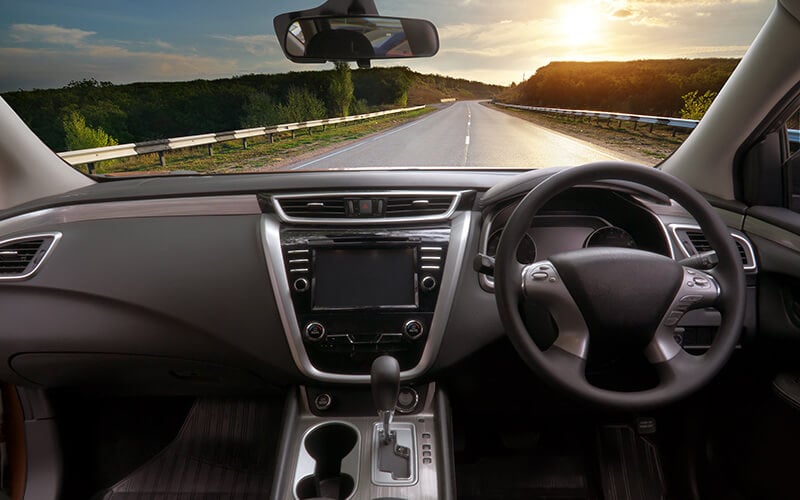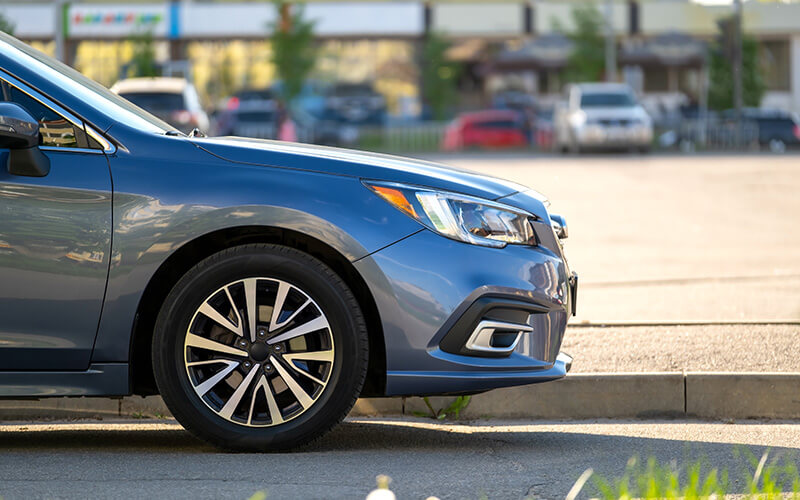The Future of Autonomous Driving and Taxis

Are you worried about the future of autonomous driving and the effect it could have on driving? Don't worry, we’re taking a deeper look into how it works, where it's being tested and what it means for the taxi industry.
The concept of flying taxis sounds bizarre enough, though have you heard about the potential for driverless taxis?
With another futuristic development underway in the industry, it seems the taxi trade is set to experience more radical changes should this technology succeed. Changes which could be closer than we think.
But, what would a driverless taxi look like? How would it work, and what would autonomous driving mean for the taxi industry? Read on for The Taxi Centre’s view and insight on the driverless taxis.
Table of Contents
1. What are self-driving taxis?
2. How do driverless taxis work?
3. What are the benefits of autonomous driving?
4. What are the disadvantages of driverless taxis?
5. What does the future of self-driving vehicles look like?
What are self-driving taxis?
As their name suggests, self-driving taxis are vehicles that operate without a human driver behind the wheel.
While it may sound like something you might watch in a film set light years into the future, it’s currently being tested in the transport industry in America with paying customers.
There are two main companies currently testing self-driving vehicles: Google-owned Waymo, and General Motors’ Cruise. Waymo began as a secret project in 2009 and has been underway for some time, while Cruise is a new initiative that was granted approval to operate in 2022.
Both companies have developed a network of fully automated driverless vehicles which are being assessed by their ability to safely pick up and drop off passengers in limited areas.
Cruise operates 30 electric vehicles which are only allowed to transport passengers in non-congested areas within San Francisco during 10am and 6pm, while Waymo’s driverless taxi service is being tested in limited areas of Phoenix, Arizona.
Capable of fully automated driving, these vehicles feature a voice reminder to passengers that there is no driver in the front seat, though many are being tested with a backup human driver to help mitigate any safety risks if needed.
The idea is that passengers would book a taxi online, and within minutes the self-driving taxi would arrive to pick them up and transport them to their destination.
How do driverless taxis work?
According to Woz, there are different levels of autonomous driving, ranging from Level 0 to Level 5.
Level 0 involves no autonomy, while Levels 1 and 2 involve a limited number of autonomous features - much like what we’re currently seeing with driver assistance systems in more advanced vehicles.
Level 3 involves conditional automation, whereby the system can operate under limited conditions and self-park. Level 4 is fully autonomous, though not yet suitable for use in live traffic, and this is currently the stage these self-driving fleets are at.
Level 5 is the ultimate goal, where operation is fully autonomous in all conditions, including responding and adapting to both human and robotic traffic. This is the stage that driverless vehicles and taxis will need to reach before they are rolled out on a wider scale.
Driving is a very unpredictable experience. This includes both the way a person drives their vehicle, and how they respond to unforeseeable hazards such as pedestrians stepping out into the roads, accidents, and different road or weather conditions.
That’s why driverless vehicles will need to be exhaustively tested and assessed by regulators to make sure they are completely safe before becoming a permanent fixture on our roads.

What are the benefits of autonomous driving?
Behind the initiative for driverless vehicles - though a daunting concept - is actually the aim to improve road safety and transportation.
This includes:
- Removing people from high-risk working environments such as power plants and factories to avoid putting humans at risk
- Making taxi rides less expensive
- Reducing road accidents and deaths caused by dangerous driving
Since all of these self-driving vehicles will likely be electric, they will also help to reduce pollution and foster a more sustainable future of motoring.
In the taxi driving industry and other public transportation services where there is the ongoing issue of driver shortages, self-driving vehicles could help bridge the gap to reduce pressure on the industry.
With a strictly regulated autonomous fleet, we could also see a change in traffic patterns and be able to control congestion in major towns and cities where this is currently a big issue.
What are the disadvantages of driverless taxis?
With innovation often comes many challenges. That’s why it’s unlikely we will see driverless taxis become available in the UK anytime soon.
Self-driving taxis and all other autonomous vehicles will need to be extensively tested in isolated environments to assess how they respond to different factors.
The University of Michigan’s test facility, Mcity, is the first purpose-built testing ground for such purposes. The sixteen-acre site has been designed just like a normal city with roads and traffic systems including signals, underpasses, signs, and buildings with different terrains.
It’s even complete with real pedestrian crossings to simulate potential public hazards and how these vehicles can respond safely.
There are also additional challenges that come with a fully autonomous fleet, including improving current infrastructure in order to help them adapt.
This may include dedicated lanes for self-driving vehicles, changing of road signs and road paintings to help the systems recognise them, and improving the responsiveness of the sensors used in self-driving vehicles.
Along with these sensors used in self-driving vehicles comes the issue of data protection and privacy. Since these highly advanced cameras would be constantly scanning the streets, the question of how passers-by and their data will be protected from being handed elsewhere remains.
Then, there’s the issue of trust. Many people would feel incredibly uncomfortable at the prospect of getting into a taxi - or any vehicle for that matter - where there is no driver behind the wheel.
In short, automated vehicles will have to be ready for anything, and be able to respond to any scenario however likely or unlikely in the same way as a responsible human driver would.
Plus, they will have to win over the public’s trust and get them on board to use them. But the biggest disadvantage of all is their lack of personality, and the ability to put a smile on a customer's face!

What does the future look like for self-driving vehicles?
Recent discussions around self-driving cars have revealed what we could expect to see in their development over the next decade or so.
Over the next two years, there will be a strong focus on testing self-driving vehicles in as many different conditions as possible. This includes various states of traffic, weather conditions, and in different scenarios to ensure maximum safety.
Currently, for instance, driverless taxis are not allowed to operate in wet or foggy conditions due to safety risks.
Waymo plans to expand testing on a wider scale to different cities including New York with plans already underway.
Meanwhile, in China, start-up AutoX who launched driverless RoboTaxi in 2020 will also be expanding to other cities across the country and California.
In the next five years, driverless technology could also expand to HGVs on motorways, tested using platooning vehicles. These are a group of semi-autonomous vehicles that drive in a group to prevent them from getting separated by other vehicles so they can be closely monitored.
Depending on how safety and public trust in driverless vehicles evolve, cities could be redesigned to accommodate self-driving vehicles like taxis within the next decade. Infrastructure will need to be redesigned to help fully automated vehicles navigate the roads, with safety at the forefront.
Overall, it’s still a long way off for driverless taxis and driverless technology, with many challenges and problems remaining to be solved.
Although The Taxi Centre doesn't offer driverless taxis for sale just yet, we do have a huge range of quality taxis for you to choose from. Whether you are looking to invest in electric taxis, used taxis or new taxis, we have plenty of options for you. We also stock leading taxi manufacturers including KIA, Toyota, LEVC, Skoda, plus many more.
If you have any questions or would like to enquire about purchasing a taxi, why not get in touch with our expert team on 0330 012 8959 or explore more helpful articles in our newsroom.